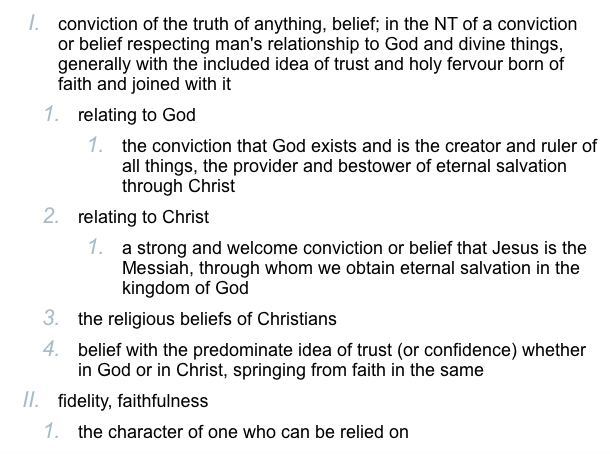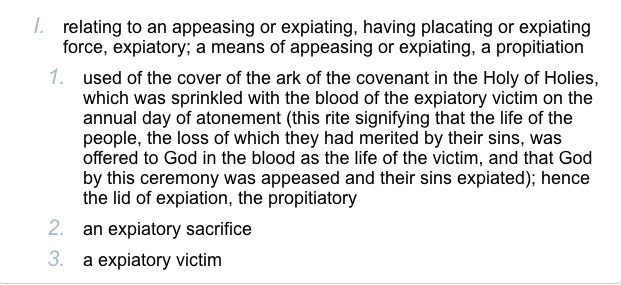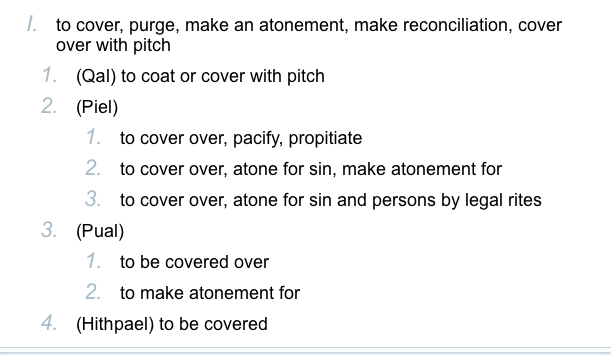What was in the Ark of the Covenant? Easy question answered by the Bible.
and the ark of the covenant overlaid round about with gold, WHEREIN WAS the golden pot that had manna, and Aaron's rod that budded, and the tables of the covenant
It can't get any clearer that the pot of manna, Aaron's rod, and the tables of the covenant were inside the ark. All three of those items follow the words WHERE IN WAS which means that's where they were. Father Stephen De Young says this is an urban legend.
Verse 4, “which had the golden censer and the ark of the covenant overlaid on all sides with gold, in which,” that in which is… Okay, so I’m going to pause a second. Pet peeve urban legend. The pot with the manna and Aaron’s rod that budded were not in the ark. People think they were in the ark. They’re not in the ark, if you read carefully. They were put into the Holy of Holies along with the ark, whereas the The Tablets of the Torah were inside the ark. But those are the things that were back in there in the holy of Holies.
https://www.ancientfaith.com/podcasts/wholecounsel/hebrews_91_28/
This is wrong. The description of the contents of the Holy of Holies are the golden censer and the ark. Then the contents of the ark are described which include the pot of manna, Aaron's rod, and the stone tablets. Even the notes in the Orthodox Study Bible say that.
9:4 The ark of the covenant contained the relics, as it were, of Israel: the pot of manna, Aaron's rod, and the tablets of the Law.
Are the editors of the Orthodox Study Bible perpetuating an urban legend? Is that what Father Stephen de Young, who is Orthodox, is willing to say? Of course they are not. Father de Young is misreading the scriptures which are grammatically clear.
But there is more.
When discussing the actions of the priest inside the Holy of Holies, the offering up of blood as an atonement, Father de Young denies he is offering it at all. He is merely smearing it on various objects.
Verse seven, “But into the second part the high priest went alone once a year, not without blood, which he offered for himself and for the people’s sins committed in ignorance; the Holy Spirit indicating this, that the way into the Holiest of All was not yet made manifest while the first tabernacle was still standing.” So noone could go in there except that one day, and then they tied a rope to him in case he dropped dead and all that. But also, he had to, when you read the day of atonement ritual, he had to go in and set up this huge cloud of incense, because that was the day on which Yahweh the god of Israel would appear in the holy place. And if he saw him, he would die, so he had to set up this huge cloud of incense so he wouldn’t see him.
And he had to come in with the blood that he had to smear everywhere to cleanse and purify everything. Now remember, we’ve been taught to think “blood for the blood god,” he comes in and he offers the blood — God is drinking the blood or something — which is not it at all. What did he do with the blood on the day of atonement? He went in and he smeared it on the physical objects, on the furniture, on all these things that were these golden things that were just named, to purify them from the residue of the sins of the people.
https://www.ancientfaith.com/podcasts/wholecounsel/hebrews_91_28/
Father de Young reads verse seven which says the High Priest went into the Holy of Holies to offer blood. Then Father de young says he didn't really offer blood at all. Instead he smeared it on the objects inside the Holy of Holies to purify those objects "from the residue of the sins of the people." Objects need to be purified from the sins of the people? No. The blood is offered for the people's sins.
The blood is also not smeared everywhere but is sprinkled on the mercy seat. Of course Father de Young mocks the idea of the mercy seat.
But comment on that mercy seat: our friends the King James translators invented that whole idea, I’m guessing because their misread of the idea— So God wasn’t enthroned on the ark. The ark was the footstool of his throne. But they’re trying to translate kefir verbs in Hebrew, hilastērion in Greek, which is the word that we translate as atonement. And they come up with mercy seat for the top of the ark. So here’s the thing: kefir verbs literally mean— like Yom Kippur, the Kippur in Yom Kippur, Yom is day, Kippur is atonement— but the root meaning of those verbs is “to cover.” Like, to cover something over. So when that word is used to describe the lid of the ark of the covenant, it just means the cover. Like the lid, the cover, the cover of a book. Mercy seat is going way out of your way!
God was not enthroned on the ark? Again Father de Young contradicts the Orthodox Study Bible which says just the opposite.
God is enthroned upon the cherubim; hence, God's throne in Israel's midst, the mercy seat, has a cherub on each side (the Orthodox Christian altar is flanked by cherubim). These representations, along with the pictures of cherubim on the inner veil (Ex 26:31) and the beauty and detailed workmanship of everything made for the tabernacle, serve as the icons of the OT. This, and numerous other passages, held put to rest the fear that the Second Commandment (Ex 20:4-6) prohibits all imagery. God cannot be represented because divine nature is unknowable and hence cannot be depicted, However, when the Son becomes Man, the human nature of God the Son can be and is, imaged,
Will Father De Young be so bold as to say the Orthodox Study Bible is wrong?
How about his Greek and Hebrew? He says that the root word for the Greek word translated "mercy seat" and the Hebrew word "kippur" means to cover. You know, like the cover of a book. What a base way to degrade the atonement. Apparently the blood of Christ atones for our sins in the way one covers a book or places a lid on the cookie jar! A quick look at those words shows he is wrong.
Greek:
relating to an appeasing or expiating, having placating or expiating force, expiatory; a means of appeasing or expiating, a propitiation
Root:
to render one's self, to appease, conciliate to one's self
to render one's self, to appease, conciliate to one's self
to become propitious, be placated or appeased
to be propitious, be gracious, be merciful
to expiate, make propitiation for
Hebrew:
to cover, purge, make an atonement, make reconciliation, cover over with pitch
(Qal) to coat or cover with pitch
(Piel)
to cover over, pacify, propitiate
to cover over, atone for sin, make atonement for
to cover over, atone for sin and persons by legal rites
(Pual)
to be covered over
to make atonement for
(Hithpael) to be covered
The root of this word is not given but look at that! The usage of cover here has NOTHING to do with covering a book. It has to do with pacification, propitiation, and atonement.
Here is Father de Young and Father Stephen Damick denying blood was offered to God.
Fr. Stephen: It usually wasn’t applied to people, but, yes, in those other cases the blood was seen as this cleansing and purifying agent. It was never offered to anybody in Israelite religion. It was never offered to anybody, it was not used to pay for anything, it was not “blood for the blood god”—you’ve got to go to Mesoamerica to get that. It was either disposed of in the sacred way or used for the purpose of cleansing and purification.
Fr. Andrew: Yeah, not… You don’t put it on the table and eat and drink it with your God—unless you’re a pagan.
Fr. Stephen: Or offer it to him in any other way.
https://www.ancientfaith.com/podcasts/lordofspirits/the_sacrifices_of_righteousness/
Except the Hebrews chapter 9 says the blood was offered to God by the High Priest. Blood is REQUIRED for atonement.
Leviticus 17:11 For the life of the flesh is in the blood: and I have givenit to you upon the altar to make an atonement for your souls: for it is the blood that maketh an atonement for the soul.
If blood was not offered to God by the High Priest then what of the blood of our High Priest Jesus Christ? Was that just smeared on the cross? No it was offered up to God.
Hebrews 9:13-14 For if the blood of bulls and of goats, and the ashes of an heifer sprinkling the unclean, sanctifieth to the purifying of the flesh:
How much more shall the blood of Christ, who throughthe eternal Spirit offered himself without spot to God, purge your conscience from dead works to serve the living God?
Hebrews 9:22 And almost all things are by the law purged with blood;and without shedding of blood is no remission.
It is simply mystifying how these Orthodox priests can teach the opposite of what is in the Orthodox Study Bible and how they can mock the blood offering of the High Priest by saying "it was not blood for the blood god" and it was not offered to Him in anyway. Every Sunday these men transform wine into blood which the people drink!
The fact is Orthodoxy over all has a large problem with Penal Substitution and the blood atonement of Jesus Christ. But that is an article for another day.
















